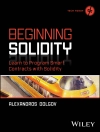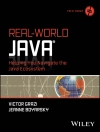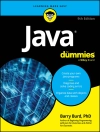A comprehensive guide to the language used to customize
Microsoft Office
Visual Basic for Applications (VBA) is the language used for
writing macros, automating Office applications, and creating custom
applications in Word, Excel, Power Point, Outlook, and Access. This
complete guide shows both IT professionals and novice developers
how to master VBA in order to customize the entire Office suite for
specific business needs.
* Office 2010 is the leading productivity suite, and the VBA
language enables customizations of all the Office programs; this
complete guide gives both novice and experienced programmers the
knowledge they need to make maximum use of VBA for Office
* Supported with real-world examples in Word, Excel, Power Point,
Outlook, and Access, this book offers clear, systematic tutorials
with both intermediate and advanced content
* Covers learning how to work with VBA; recording macros; using
loops and functions; using message boxes, input boxes, and dialog
boxes; creating effective code; XML-based files; Active X; the
developer tab; content controls; add-ins; embedded macros; and
security
Mastering VBA for Office 2010 prepares developers to
customize all Microsoft Office 2010 applications for the unique
needs of their employers.
Jadual kandungan
Introduction xxvii
Part 1 * Recording Macros and Getting Started with VBA1
Chapter 1 * Recording and Running Macros in the Office Applications 3
Chapter 2 * Getting Started with the Visual Basic Editor29
Chapter 3 * Editing Recorded Macros 63
Chapter 4 * Creating Code from Scratch in the Visual Basic Editor 85
Part 2 * Learning How to Work with VBA 105
Chapter 5 * Understanding the Essentials of VBA Syntax107
Chapter 6 * Working with Variables, Constants, and Enumerations 123
Chapter 7 * Using Array Variables 145
Chapter 8 * Finding the Objects, Methods, and Properties You Need 167
Part 3 * Making Decisions and Using Loops and Functions191
Chapter 9 * Using Built-in Functions 193
Chapter 10 * Creating Your Own Functions 227
Chapter 11 * Making Decisions in Your Code 245
Chapter 12 * Using Loops to Repeat Actions 265
Part 4 * Using Message Boxes, Input Boxes, and Dialog Boxes 293
Chapter 13 * Getting User Input with Message Boxes and Input Boxes 295
Chapter 14 * Creating Simple Custom Dialog Boxes 315
Chapter 15 * Creating Complex Dialog Boxes 381
Part 5 * Creating Effective Code 429
Chapter 16: Building Modular Code and Using Classes 431
Chapter 17: Debugging Your Code and Handling Errors 457
Chapter 18: Building Well-Behaved Code 487
Chapter 19: Securing Your Code with VBA’s Security Features 501
Part 6 * Programming the Office Applications525
Chapter 20 * Understanding the Word Object Model and Key Objects 527
Chapter 21 * Working with Widely Used Objects in Word559
Chapter 22 * Understanding the Excel Object Model and Key Objects 591
Chapter 23 * Working with Widely Used Objects in Excel617
Chapter 24 * Understanding the Power Point Object Model and Key Objects 631
Chapter 25 * Working with Shapes and Running Slide Shows653
Chapter 26 * Understanding the Outlook Object Model and Key Objects 673
Chapter 27 * Working with Events in Outlook 693
Chapter 28 * Understanding the Access Object Model and Key Objects 713
Chapter 29 * Manipulating the Data in an Access Databasevia VBA 735
Chapter 30 * Accessing One Application from Another Application 755
Chapter 31 * Programming the Office 2010 Ribbon 783
Appendix * The Bottom Line 811
Index 855
Mengenai Pengarang
Richard Mansfield is the author or coauthor of more than 40 computer books, including Visual Basic .NET Power Toolkit, Office 2003 Application Development All-in-One Desk Reference For Dummies, and Programming: A Beginner’s Guide. He is the former editor of Compute! magazine. Overall, his books have sold more than half a million copies worldwide and have been translated into 12 languages.












